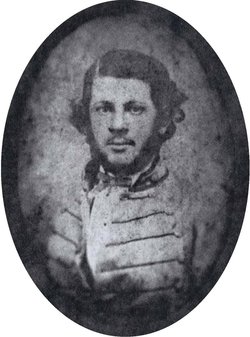JJohnson
Banned
It's highly improbable for the Confederacy to win the War between the States, given TFSmith121's infographic that has popped up before. So, I'm positing an alternate alternate war.
----
Overseas Territories of the Confederacy (Wikipedia)
Confederate Polynesia, a Confederate territory, was first claimed in 1834 by American Captain William Danforth, who created a small village called Wallis Town for the British explorer who visited the island in 1767, with a settlement of 45 Americans. Later, in 1841, several additional ships settled on the island of Tahiti, founding the village of Franklin (OTL Papeete), the capital of the territory to this day.
Solomon Islands, a negotiated territory in 1900 between Germany and the CSA. The CSA negotiated a split that allowed Germany to keep Bougainville as part of German New Guinea, while the CSA kept the islands.
Former Overseas Territories of the Confederacy
Caroline Islands - ceded in 1900 as part of the deal to gain the Solomon Islands. They were seen as too widely scattered and not having enough land for a coaling station.
Puerto Rico - after the Spanish-American-Confederate War in 1898, the United States received the Philippines, Guam, and the Marianas Islands, while the Confederacy received the island of Puerto Rico, already an island destination for Cuban Confederates and Floridians. It became a state in 1959, along with the Virgin Islands.
Virgin Islands - became a state in 1959. Purchased from the Danish in 1917, the British Virgin Islands were ceded in 1942 as part of the agreement to provide war material for the United Kingdom in World War 2.
----
Texas German (Wikipedia)
Texas German (German: Texasdeutsch) is a German language dialect spoken by descendants of German immigrants who settled in Texas in the mid-19th century. These "German Texans" founded the towns of New Braunfels, Fredericksburg, Boerne, Walburg, and Comfort in Texas Hill Country, and Schulenburg and Weimar to the east. Today, their presence is felt in a number of areas of Texas, with Texas German spoken by 12.48% of the population today.
It is a mixture of 19th century German and English, with such words as "der Hamburger" and "der Cowboy," and using the simple past and simple subjunctives as opposed to the more common perfect (bin gegangen vs ging) and periphrastic subjunctive in Europe (würde gehen, vs. ginge).
The language is widespread enough in the major metropolitan areas that 'Little Germany' sections of Dallas, Houston, and Austin are tourist destinations, as well as major party destinations during Oktoberfest, with festivities, rides, beer halls, and souvenirs. The TV Show "Walker, Texas Ranger" featured a Texas German Ranger Angie Fischer (Eva Habermann) in its final seasons, and the show Bones featured the forensic anthropologist Stefanie Bauer, based loosely on the life and work of Kathy Reichs.
It is not to be confused with Rio Grande German, which is actually related to a Low German dialect spoken in the eastern, Prussian states of Germany (East Prussia, West Prussia), similarly adapted to American measurements and legal terminology (de County, de Meile, de Foot, de Snack)
----
Overseas Territories of the Confederacy (Wikipedia)
Confederate Polynesia, a Confederate territory, was first claimed in 1834 by American Captain William Danforth, who created a small village called Wallis Town for the British explorer who visited the island in 1767, with a settlement of 45 Americans. Later, in 1841, several additional ships settled on the island of Tahiti, founding the village of Franklin (OTL Papeete), the capital of the territory to this day.
Solomon Islands, a negotiated territory in 1900 between Germany and the CSA. The CSA negotiated a split that allowed Germany to keep Bougainville as part of German New Guinea, while the CSA kept the islands.
Former Overseas Territories of the Confederacy
Caroline Islands - ceded in 1900 as part of the deal to gain the Solomon Islands. They were seen as too widely scattered and not having enough land for a coaling station.
Puerto Rico - after the Spanish-American-Confederate War in 1898, the United States received the Philippines, Guam, and the Marianas Islands, while the Confederacy received the island of Puerto Rico, already an island destination for Cuban Confederates and Floridians. It became a state in 1959, along with the Virgin Islands.
Virgin Islands - became a state in 1959. Purchased from the Danish in 1917, the British Virgin Islands were ceded in 1942 as part of the agreement to provide war material for the United Kingdom in World War 2.
----
Texas German (Wikipedia)
Texas German (German: Texasdeutsch) is a German language dialect spoken by descendants of German immigrants who settled in Texas in the mid-19th century. These "German Texans" founded the towns of New Braunfels, Fredericksburg, Boerne, Walburg, and Comfort in Texas Hill Country, and Schulenburg and Weimar to the east. Today, their presence is felt in a number of areas of Texas, with Texas German spoken by 12.48% of the population today.
It is a mixture of 19th century German and English, with such words as "der Hamburger" and "der Cowboy," and using the simple past and simple subjunctives as opposed to the more common perfect (bin gegangen vs ging) and periphrastic subjunctive in Europe (würde gehen, vs. ginge).
The language is widespread enough in the major metropolitan areas that 'Little Germany' sections of Dallas, Houston, and Austin are tourist destinations, as well as major party destinations during Oktoberfest, with festivities, rides, beer halls, and souvenirs. The TV Show "Walker, Texas Ranger" featured a Texas German Ranger Angie Fischer (Eva Habermann) in its final seasons, and the show Bones featured the forensic anthropologist Stefanie Bauer, based loosely on the life and work of Kathy Reichs.
It is not to be confused with Rio Grande German, which is actually related to a Low German dialect spoken in the eastern, Prussian states of Germany (East Prussia, West Prussia), similarly adapted to American measurements and legal terminology (de County, de Meile, de Foot, de Snack)


